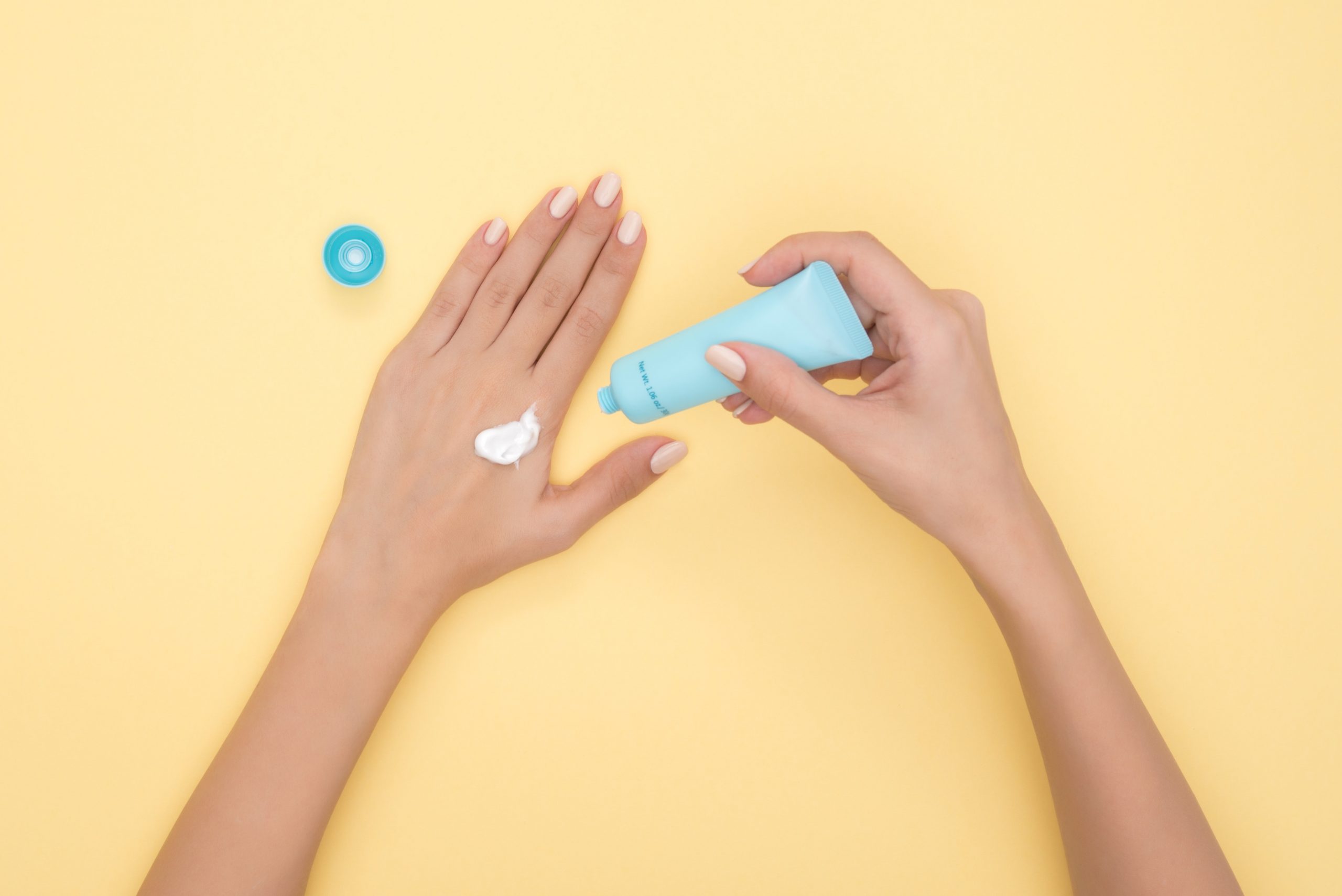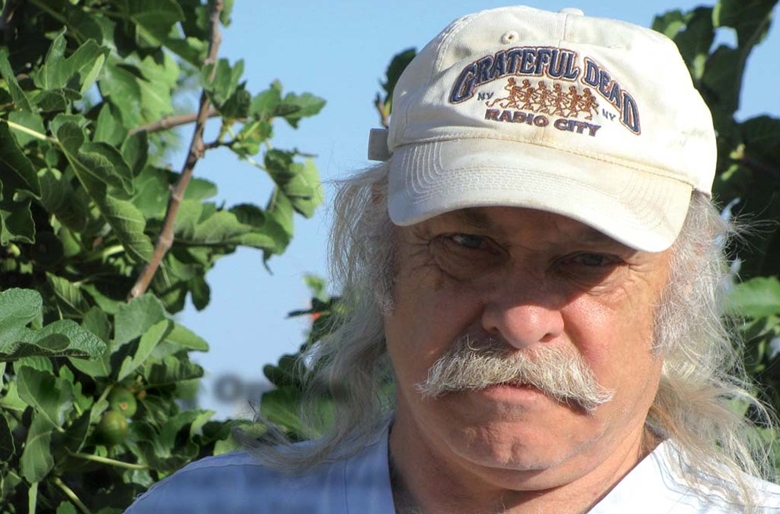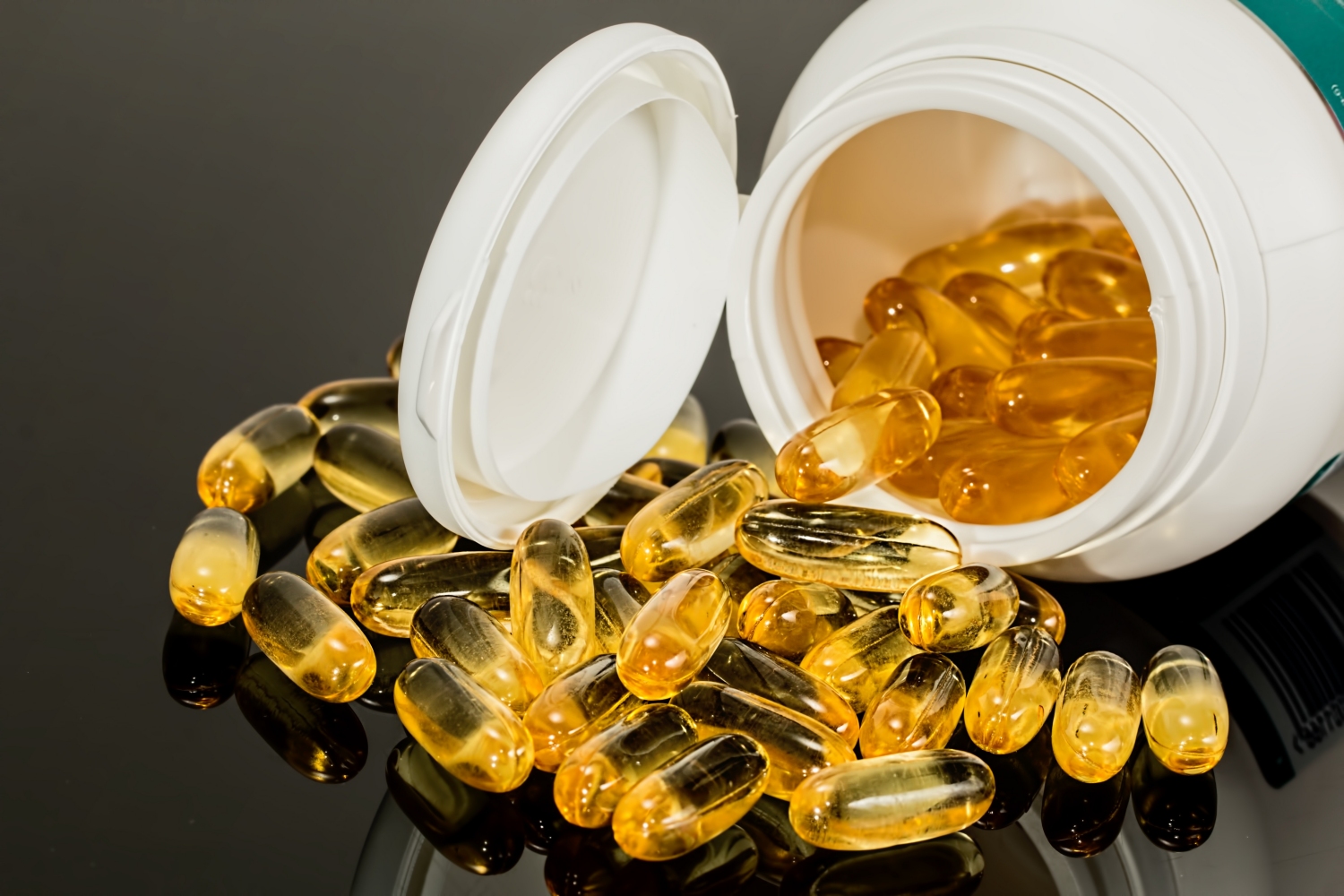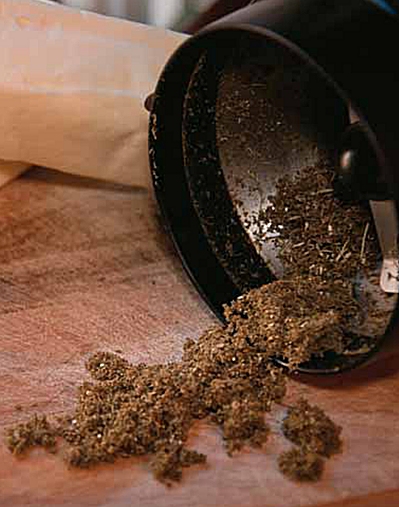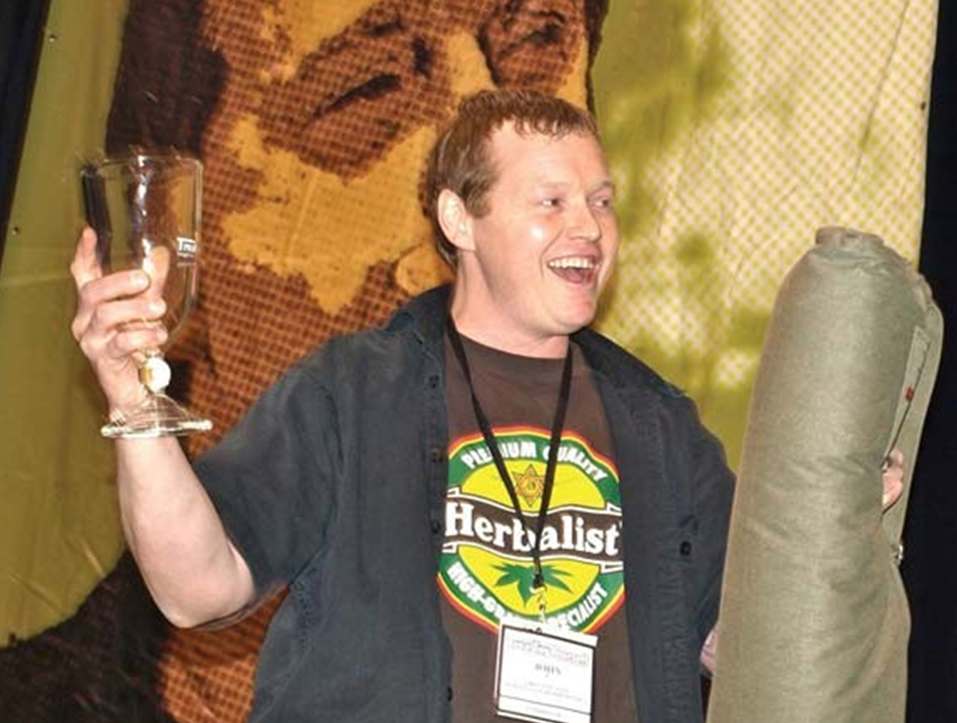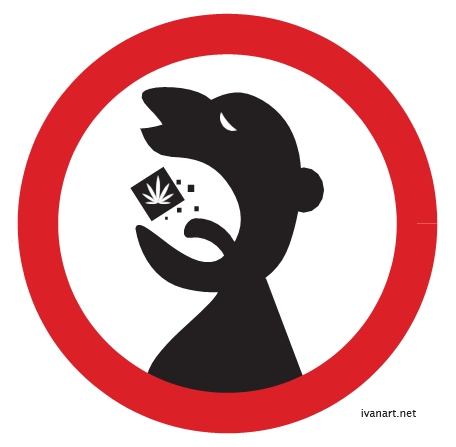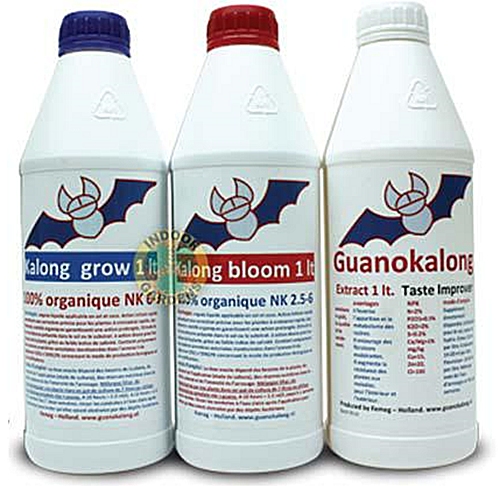
Therapeutic Salves
Mary Lou Smart – www.medicalcannabisart.com
Salves deliver medicine topically. Harder in concentration than lotions, these semi-solid preparations have been soothing skin for well over a century.
Cannabis salves provide relief for conditions including arthritis, back pain, muscle spasms, burns, insect bites, psoriasis, eczema, scarring, and much more.
While online recipes abound, cooking the medicated balm in a crockpot might not be the best practice. Or it might.
According to several cannabis professionals in Montana, there’s just no telling until you receive value-added guidance from a lab.
Cannabis plants feature the acidic cannabinoid THC-A, which is beneficial but not psychoactive. Tetrahydrocannabinol, THC, is activated when heated or added to oil or alcohol.
“Most of the preparations that I’ve tested initially, that come to the lab for the first time, are made improperly,” said Noel Palmer, PhD, of Montana Botanical Analysis in Bozeman. “Either they’re not cooked enough, they’re cooked way too much, or they’re under-dosed. I’d say that 90 percent of the things that I’ve tested that are either edibles or topicals need significant improvement in order for the science to agree with what we want to give to our patients.”
Palmer’s background in analytical chemistry and instru-mentation for earlier work with soil and water made cannabinoid chemistry a natural progression.
“In theory, you should be able to buy an instrument, turn it on, and use it,” he said. “In practice, chromatography and analytics are actually quite involved and quite detail oriented. There’s a lot of very shallow science going on now. There’s some good science, but there’s definitely no shortage of people saying that they can do more than they really can.”
While liquid and gas chromatography provide similar information, Palmer states that liquid chromatography elicits more information about acidic cannabinoids and is the best method for cannabis testing. Gas chromatogra-phy often lumps cannabidiol (CBD) — all the rage lately
— with CBC, or cannabichromene, a very common cannabinoid, resulting in inflated CBD reporting. In addition to its own medicinal benefits, CBD counteracts the psychoactive characteristics of THC.
“CBC is a cannabinoid that is found in almost every strain of cannabis that I look at,” he said. “CBD, however, is very, very rare.
In Montana, I’ve tested close to 1,300 strains and so far I’ve seen six unique strains with cannabis over one-half percent. And so people who use gas chromatography, actually, I have to question how well they are able to resolve CBC from CBD.”
Instead of high CBD — many refer to it as CBD-rich cannabis — which might be out-of-reach, at least in Montana, until it can be bred back into the plant, Palmer suggests that a better balance of beneficial cannabinoids is a more attainable goal.
Herbalist Vaughn Hirschkorn, owner of Montana-based Organic Relief, has been extracting beneficial oils from natural herbs for 20 years. When living in the Santa Barbara, California, area, he used techniques practiced by Native Americans and early settlers to create lotions, salves, and tinctures from red clover, plantain, calendula, and even acorns. For almost two years, he’s been formu-lating cannabis-infused salves for caregivers throughout Montana, with the added benefit of numerous herbs, including white willow bark, white oak, marshmallow root, rose hips, and burdock.
Many of his herbal preparations are without cannabis.
“I’ve always loved herbs, herbal remedies, and things in the wild,” he said. “I’ve found cannabis to be one of those wonderfully enhanced herbs or plants that are here for our use for many things.”
Whereas a lotion requires an emulsifying agent such as lanolin to bring water-based/oil-based products together, Hirschkorn’s salves are emulsified with beeswax and coconut oil.
“We hear about other salves being too waxy and what-not,” he said. “We’re dialed into a balance between each oil extract and the wax for a nice, glistening salve.”
Organic Relief’s proof is in the testing, according to Hirschkorn, who tests his product at Montana Botanical Analysis. “I’ve spent thousands of dollars on testing, and it’s allowed me to zero in on my ratios,” he said. “You figure out if you’ve heated it enough by testing your products. You get a recipe and you bring it in. Maybe you’ve got a lot of acid or hardly any THC, and you fig-ure it out through testing.”
Ron Rosenthal, owner/operator of Canyon Creek Caregivers in Helena, Montana, often recommends that older patients who might experience adverse reaction to a psychoactive product benefit from salve. Absorbed through the skin and primarily acting locally, the wonder ointments work on pain and not the brain. He sells a four-ounce jar of Organic Relief salve for $40.
“I have outstanding results with salve,” he said. “It’s very cost effective. We sell them cheap, and they go a long way.”
Rosenthal is caretaker to an 87-year-old patient who suffers from post-herpetic neuralgia in her right thumb. Effective treatment for the condition, a complication of shingles, is tricky, and the chronic pain can last for years.
“We tried all sorts of things, but nothing came close to working like THC-infused salve,” he said. “All uses is salves. She doesn’t smoke medication or take the capsules. She used to, but I was afraid, quite frankly, that there was a risk that she would fall. We shied away from using capsule or edible applications because we didn’t want to increase the risk of her falling. So she uses strictly the and they work great for her.”
Rosenthal reports that 20 to 30 of his patients use salve regularly. His older patients primarily use lotions, edibles, and salves.
Paul Schmidt, owner/operator of Sleeping Giant Caregivers in Helena, finds that salves are just the ticket for persistent bursitis in his shoulder. A lifelong fan of natural remedies, he reports that his mother used to treat his sore legs with pills containing Arnica montana after skiing. Also known as wolf bane, Arnica montana has long been used medicinally, but can be toxic when large amounts are eaten.
Schmidt reasons that cannabis-infused salve is extremely effective applied in the area because head to toe, the human body is to respond.
“Do enough research and you’ll understand that the receptors are
throughout the body,” he said.
He reports that 150 of Sleeping Giant’s patients use salve regularly.
“It’s a wonderful thing and helps so many people, includ-ing myself,” he said, adding, “I couldn’t live without it. Salve is one of the things that keeps me going.”
Another of Schmidt’s patients is a Vietnam veteran who was left with disfiguring scars on his neck and face from exposure to Agent Orange. Regular applications of Organic Relief’s soap and salve have begun to heal the chemical burns.
“The doctor at the VA asked him what he was doing, because the scars are not only healing, but they look 100 percent better,” he said.
Schmidt gave a sample of the salve to another patient who suffers from arthritis. She rubbed some of it onto hands and then left for the 30-minute drive to home.
She was barely down the road and called – She was excited because all of a sudden, the first time in 18 or 19 years, she didn’t have the pain in her hands. It was that fast.
“She uses it all of the time now.”

